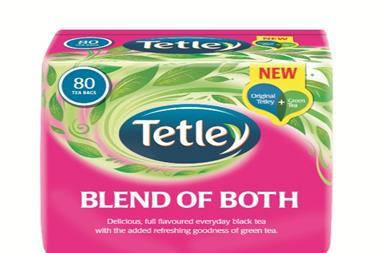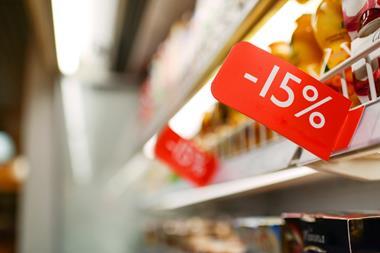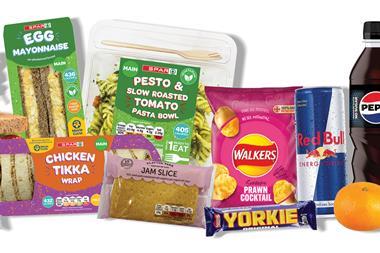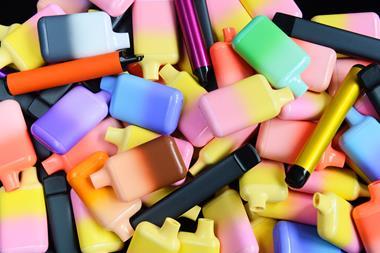The switch to premium coffee and speciality teas creates an ideal opportunity for convenience retailers. Aidan Fortune finds out more
Even though this winter has been relatively mild so far, don’t underestimate the British public’s appetite for a hot beverage to either get themselves going in the morning, or wind down in the evening. And just because consumers are cutting back in other areas of their lives doesn’t mean they are unwilling to pay extra for a more premium cuppa as a treat to themselves.
This upwardly mobile trend has led to some ups and downs in the fortunes of the hot beverages market, especially coffee. Kantar figures show that the coffee market saw a 13.2% drop in sales in convenience, dragging the overall hot beverages market down 4.9% (Kantar 52 weeks ending October 30, 2011). However, the premium sector grew 11.1% within the convenience sector over the past 12 months.
New kids on the block, pod machines, continue to prosper with double-digit value growth (49%) while roast and ground coffee sales rose 11.4% (Nielsen Impulse MAT to week ending August 27, 2011).
But while pods, roast and ground coffee sales were up, the mainstream sector - made up of granules and powder coffee - were down, falling 2.2% and 20% respectively.
This move away from granules and powder is something retailers need to keep on top, says Kraft Foods trade communications manager Susan Nash. “Retailers do need to present consumers with good value and the reassurance of a consistent quality cup of coffee, however, retailers should ensure they are not becoming too reliant on these and miss out on new consumer trends.”
Top 10 best-sellers in convenience
1 Nescafé Original 100g
2 Tetley 80s
3 Nescafé Gold Blend 100g
4 Kenco Really Smooth 100g
5 PG Tips 80s
6 Cadbury’s Drinking Chocolate 250g
7 Nescafé Cappuccino Sachets 10s
8 Kenco Decaff 100g
9 Twinings Earl Grey Tea 40s
10 Carte Noire 100g
Source: IRI total convenience 52 weeks ending November 26, 2011 Aimia Foods has launched an instant coffee with what it says is the UK’s strongest ethical credentials. Café Nueva is triple-certified and hopes to reassure buyers that its producers have been fairly rewarded.
Typhoo category manager Lynn Jefferies has spotted a trend for consumers to buy smaller packs of tea and coffee. “As people become increasingly budget focused, smaller pack sizes are growing, which is perfect for convenience retailers,” she says.
“Get the right mix of small packs of tea and coffee to encourage repeat purchase on a shorter cycle. Large packs may offer value at key times of year to compete against supermarkets, but could reduce the frequency of visit to the store.”
Nash believes that consumers are looking to treat themselves when it comes to hot beverages and that retailers can take advantage of this, too. “Convenience retailers should align themselves with the changing shape of the coffee market, taking advantage of the growing sectors and stocking leading brands that deliver on quality and taste.
“As consumers continue to look for a quality cup of coffee, premium brands now hold the second biggest proportion of the total market at 32%, and are growing at a huge 11.1% in impulse.
“The sector has seen two years of double-digit growth,” says Nash. “Retailers should be looking to increase the space they allocate to best-selling premium brands and make the most of this upward trend.”
She stresses the importance of enticing consumers to trade up as increases basket spend. “Encourage consumer trade-up through the value chain, organising the fixture so it flows from good to better to best,” says Nash. “Within each segment, stock and ensure availability of top-selling brands to meet customer demand and maximise profits.
For retailers with limited space, Nash advises stocking products that satisfy more than one demand. “Stock smartly with products that tick more than one trend, such as premium and ethically sourced,” she adds. “Retailers should also look to stock pricemarked packs to help give shoppers reassurance on price and show value for money.”
Although decaffeinated coffee may not be for everyone, the sector does hold its own in the convenience market and accounted for £2.9m sales in the impulse sector over the past 12 months. “Decaffeinated coffee can provide a real sales opportunity for retailers,” says Nash. “As it is one of the smaller markets, retailers with limited space should aim to stock well-known brands that customers recognise as good quality.”
Bags of success
While coffee has seen fluctuations in sales, tea has reported a solid year overall in convenience. According to Kantar, the sector saw a 4.6% year-on-year growth. Jefferies says that this is due to tea becoming more popular with young people, especially the fruit and herbal teas. “We see that there is interest switching to tea among young urbanites, which provides an opportunity for more speciality and fruit and herbal teas where space allows within convenience stores,” she says.
Although speciality, fruit and herbal teas are continuing to grow, mainstream tea still accounts for more than 80% of the tea market in the convenience sector. Partners for Growth controller and Unilever convenience manager Tom Hazelden says retailers should be capitalising on tea being a distress purchase.
“Tea is consumed by 90% of households, so it’s a key distress and top-up item in convenience stores”, he says. “However, tea tastes have evolved in recent years, with many people introducing fruit & herbal, speciality or green tea into their repertoire. A successful tea fixture should reflect these changes, with the best-selling lines faced proportional to store size and location.
“Normal tea represents 81% of sales, so we recommend that you focus on this area primarily and, if you have space, stock the best-selling lines in the other three subcategories - fruit & herbal, green and speciality.”
Hazelden urges retailers to think carefully about the brands they stock and ensure they are catering to their customer demands.
“Tea shoppers are very brand loyal, so ensure that you stock the best-sellers to meet the greatest need and give them the appropriate share of the fixture,” he adds.
Nestlé UK trade communications manager Graham Walker agrees that this is the way to go with coffee, too. “The Nescafé brand is instantly recognisable to the consumer and the pricemarked packs are really popular, with many actively searching for them when they are in-store because they offer consumer trust,” he says. “Not only do they offer great value, but the packs also have strong visibility on shelf, which presents an excellent opportunity to drive sales.”
It’s also important not to overlook hot beverages other than tea and coffee. When it comes to breaking down the hot beverage category in store, Jefferies believes tea and coffee should get 44% each of the section with the remainder made up of chocolate and malted drinks.
During the key winter hot chocolate season 2010/2011, the hot chocolate and cocoa market grew by 4.7% , driven by one of the coldest Novembers and Decembers on record.
Instant chocolate is the leading hot chocolate drink, achieving 63% of all hot chocolate sales within convenience stores.
One of the key players in the hot chocolate category, Cadbury, saw a 7% year-on-year growth in value sales. The brand also supported the category by investing in marketing activity including product sampling and advertising, unveiling new pack designs across its range and making its entire hot chocolate portfolio Fairtrade.
Horlicks commercial director Stephanie Holland says the hot milky drinks category has grown 3% over the past year and attributes this to new entrants in the market. “The npd in the category has been providing new varieties and bringing new consumers into the aisle,” she says.
Holland urges retailers to take advantage of these new entrants to attract new customers to the sector. “Shoppers purchase for a broad number of needs, such as indulgence, comfort or peace of mind. Therefore, retailers should always be looking to bring excitement by regularly adding new products to their hot milky drinks display to increase sales and meet changing needs.”
Horlicks recently revamped its brand, placing an emphasis on nourishment, relaxation and renewal throughout the day, which returns the brand to its nutritional heartland. It will also communicate Horlicks’ nutritional benefits including 12 essential vitamins and minerals. The relaunch will be supported with in-store pos material to maximise the visibility of the new range as well as new packaging across the range. ■




























No comments yet